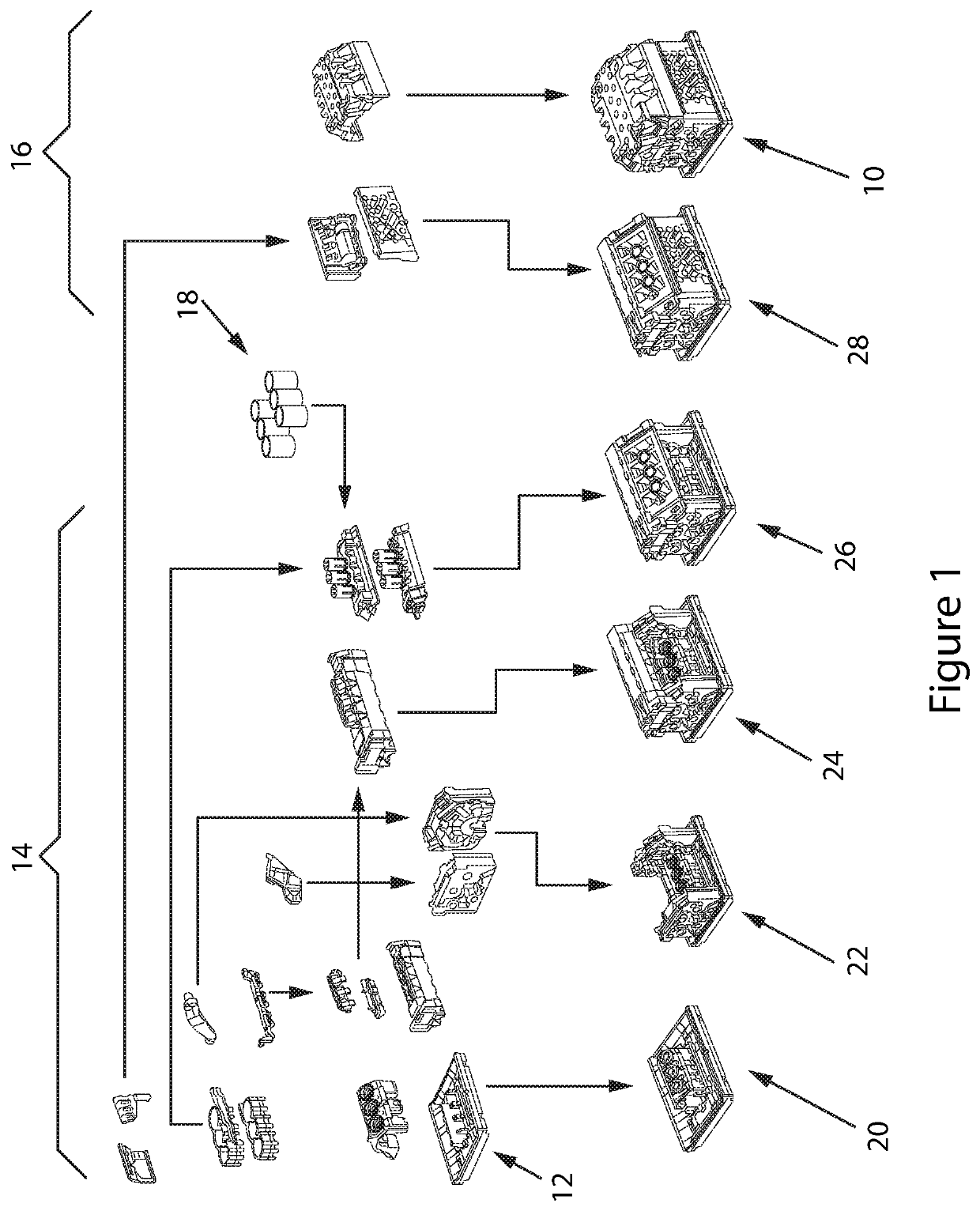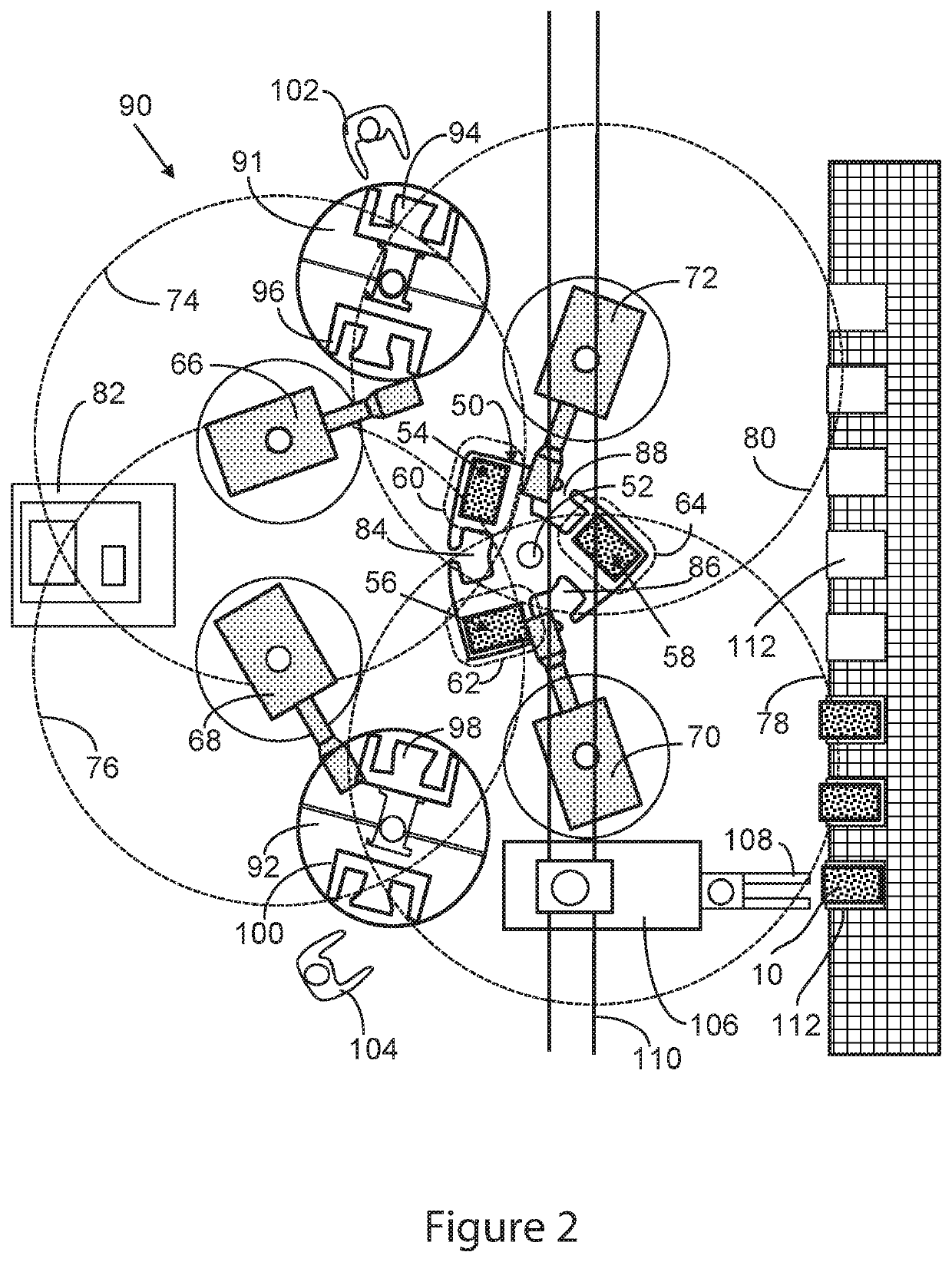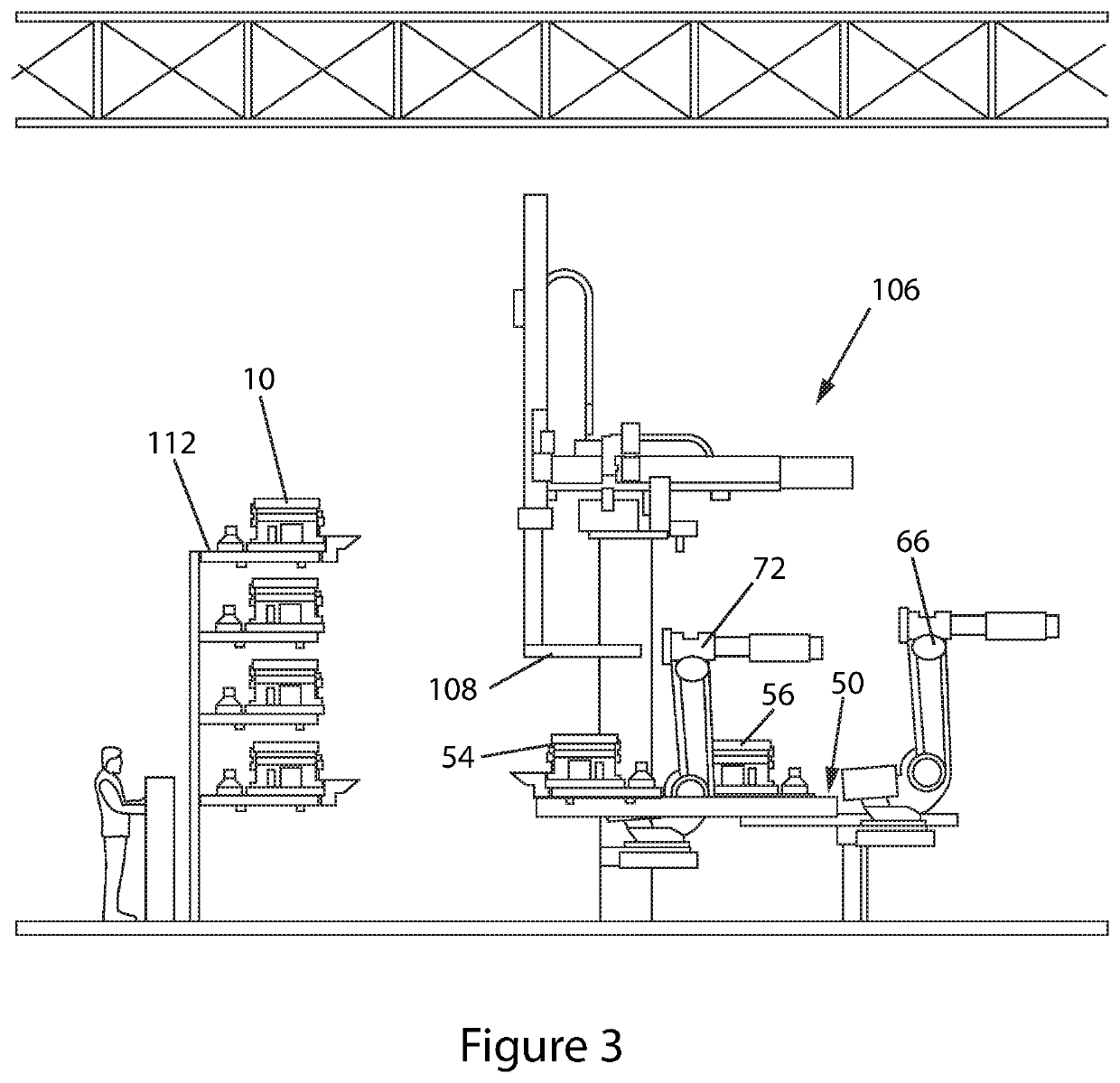Automated assembly cell and assembly line for producing sand molds for foundries
a technology of sand molds and assembly lines, applied in the field of foundries and casting operations, can solve the problems of large number of robots, stop the whole assembly line, and do not use robots to automatically assemble complex geometry molds with simultaneous assistance of robots, so as to achieve the effect of reducing capital and operating costs and high efficiency
- Summary
- Abstract
- Description
- Claims
- Application Information
AI Technical Summary
Benefits of technology
Problems solved by technology
Method used
Image
Examples
Embodiment Construction
[0024]Manufacturing of sand mold packages for mass production of automotive or aviation light-metal cast parts of complex geometry, such as engine blocks and heads, under the constraints of high productivity and precision requires the coordination of machine tools and human operators to produce the multiple cores forming the mold cavity for casting said parts.
[0025]The advantages of the invention will be described with reference to an exemplary embodiment of the invention for formation of an engine block mold, illustrated in the attached FIGS. 1 to 4, where the same numerals are used in the different figures to designate the same or similar elements for easier reading and understanding of the principles of the invention.
[0026]Referring to FIG. 1, a finished mold package 10 ready for casting an engine block is formed by sequentially assembling the cores and components of the casting progressively starting from a core base 12 where the variety of sand cores 14 and 16 and metal cylinde...
PUM
| Property | Measurement | Unit |
|---|---|---|
| shape | aaaaa | aaaaa |
| flexibility | aaaaa | aaaaa |
| distance | aaaaa | aaaaa |
Abstract
Description
Claims
Application Information
 Login to View More
Login to View More - R&D
- Intellectual Property
- Life Sciences
- Materials
- Tech Scout
- Unparalleled Data Quality
- Higher Quality Content
- 60% Fewer Hallucinations
Browse by: Latest US Patents, China's latest patents, Technical Efficacy Thesaurus, Application Domain, Technology Topic, Popular Technical Reports.
© 2025 PatSnap. All rights reserved.Legal|Privacy policy|Modern Slavery Act Transparency Statement|Sitemap|About US| Contact US: help@patsnap.com



